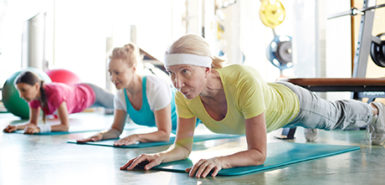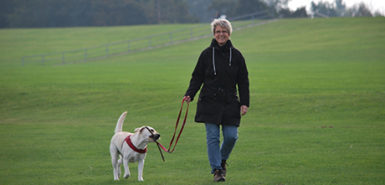
Benjamin Franklin said there are only two certainties in life: Death and taxes.
But health professionals say when it comes to arthritis, there’s another certainty: Weight loss, proper diet and exercise can ease symptoms.
“It’s amazing how much you can do with weight loss,” says Susan Day, MD, an orthopedic surgeon who specializes in arthritis for the Spectrum Health Medical Group Orthopedics.
“It’s just a math thing,” Dr. Day said. “If you’re putting a lot of extra stress on a joint, then you’re going to potentially wear the joint out faster. If you have arthritis, and you’re heavy, you’re going to feel the effects of arthritis more. And the opposite is true if you have less weight.”
Dr. Day recommends weight loss to almost all of her arthritis patients. If you imagine carrying around a backpack full of books every day, she said, and then you shed that weight, your muscles and joints will feel relief from shedding those extra pounds.
The same is true with body weight.
“Our carriages weren’t meant to carry all that weight around,” she said.
But weight loss isn’t the only proof-positive step arthritic patients can take to ease their symptoms.
Mind your menu
Jessica Corwin, a registered dietitian and community nutrition educator for Spectrum Health Healthier Communities, says many foods cause inflammation. Because arthritis is inflammation in the joints, if patients can avoid these foods, they can potentially ease their symptoms.
Processed sugars like those found in sodas, pastries, cookies and many cereals cause one’s blood sugar to spike, which releases inflammatory particles called cytokines, Corwin says. Since sugar has many names, patients should beware of any words ending in “-ose” on ingredient labels—fructose, sucrose and so forth.
Patients, however, need not worry about natural sugars found in fruits, vegetables and other whole foods. It’s the added sugars that cause problems.
“If you’re eating sugar in its natural form, you’d have to eat a lot of apples to spike your blood sugar,” Corwin says.
A second category of foods to avoid are refined carbohydrates. White flour products (breads, rolls, crackers), white rice and white potatoes (instant mashed potatoes and french fries) all increase the production of inflammatory particles called advanced glycation end products or AGEs, which can worsen symptoms.
The Arthritis Foundation offers a full list of foods to avoid.
On the other end of the spectrum, many foods can help reduce inflammation. Fatty fish, whole grains, nuts, seeds and avocados are all examples of foods that have anti-inflammatory properties, which could ease patients’ symptoms, Corwin said.
“It’s really no surprise: It’s the same foods (health professionals) are always preaching,” she said.
Get up and go
In addition to weight loss and proper diet, a variety of exercises can ease pain for many arthritic patients, said Kim DeLaFuente, community exercise coordinator for Spectrum Health.
Simple range-of-motion exercises—rolling your shoulders forward and backward, or raising your arms over your head—can have positive effects, DeLaFuente said. Light resistance training with bands and light dumbbells produces similar results.
“This is all going to build stronger muscles around the joints that might be affected by arthritis, which will ease the stress on those joints,” DeLaFuente said. “That results in less pain.
“The biggest thing with arthritis is learning to stay within limits,” she added. “Something is always better than nothing.”
DeLaFuente said simple things like going for a walk, bike ride or yoga can have positive effects on muscle tone, maintaining proper weight and maintaining good balance. She also recommends water aerobics for arthritic patients.
“A lot of times, the Arthritis Foundation has classes locally that offer water aerobics specifically for arthritis patients,” she said. “Pools tend to be warmer, so it kind of warms up the joints and makes things easier.
“And even if someone doesn’t have access to water aerobics, a great thing to do is just walking in the pool,” she said. “The advantage of the water is it takes stress off the joints, so it’s something almost everyone can do.”
 /a>
/a>
 /a>
/a>
 /a>
/a>